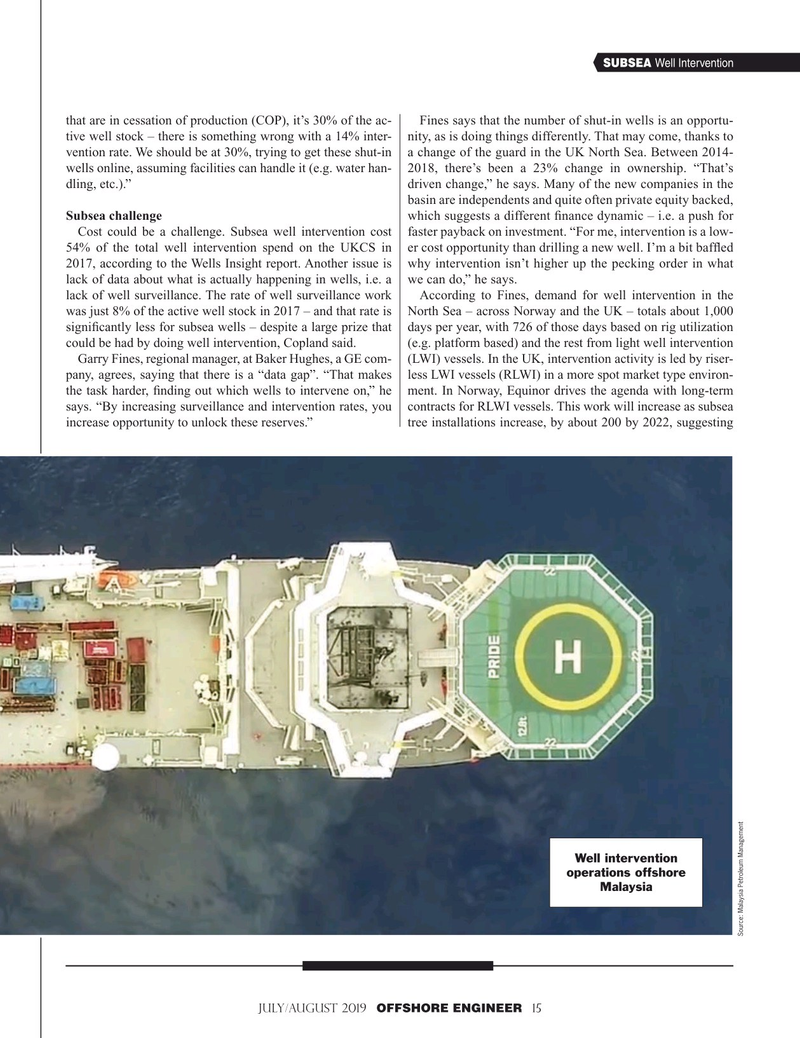
Page 15: of Offshore Engineer Magazine (Jul/Aug 2019)
Subsea Processing
Read this page in Pdf, Flash or Html5 edition of Jul/Aug 2019 Offshore Engineer Magazine
SUBSEA Well Intervention that are in cessation of production (COP), it’s 30% of the ac- Fines says that the number of shut-in wells is an opportu- tive well stock – there is something wrong with a 14% inter- nity, as is doing things differently. That may come, thanks to vention rate. We should be at 30%, trying to get these shut-in a change of the guard in the UK North Sea. Between 2014- wells online, assuming facilities can handle it (e.g. water han- 2018, there’s been a 23% change in ownership. “That’s dling, etc.).” driven change,” he says. Many of the new companies in the basin are independents and quite often private equity backed,
Subsea challenge which suggests a different ? nance dynamic – i.e. a push for
Cost could be a challenge. Subsea well intervention cost faster payback on investment. “For me, intervention is a low- 54% of the total well intervention spend on the UKCS in er cost opportunity than drilling a new well. I’m a bit baf? ed 2017, according to the Wells Insight report. Another issue is why intervention isn’t higher up the pecking order in what lack of data about what is actually happening in wells, i.e. a we can do,” he says. lack of well surveillance. The rate of well surveillance work According to Fines, demand for well intervention in the was just 8% of the active well stock in 2017 – and that rate is North Sea – across Norway and the UK – totals about 1,000 signi? cantly less for subsea wells – despite a large prize that days per year, with 726 of those days based on rig utilization could be had by doing well intervention, Copland said. (e.g. platform based) and the rest from light well intervention
Garry Fines, regional manager, at Baker Hughes, a GE com- (LWI) vessels. In the UK, intervention activity is led by riser- pany, agrees, saying that there is a “data gap”. “That makes less LWI vessels (RLWI) in a more spot market type environ- the task harder, ? nding out which wells to intervene on,” he ment. In Norway, Equinor drives the agenda with long-term says. “By increasing surveillance and intervention rates, you contracts for RLWI vessels. This work will increase as subsea increase opportunity to unlock these reserves.” tree installations increase, by about 200 by 2022, suggesting
Well intervention operations offshore
Malaysia
Source: Malaysia Petroleum Management
JULY/AUGUST 2019 OFFSHORE ENGINEER 15

 14
14

 16
16